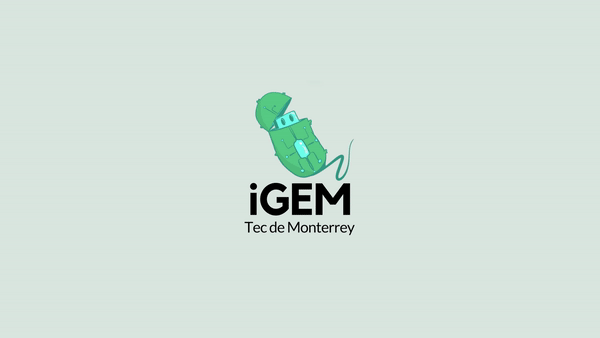EstebanDLPT (Talk | contribs) m |
|||
| Line 95: | Line 95: | ||
<div class="header-top" style="background: #397471;"> | <div class="header-top" style="background: #397471;"> | ||
</div> | </div> | ||
| − | <div class="header-bottom" | + | <div class="header-bottom"> |
| − | + | ||
| − | + | ||
| − | + | ||
| − | + | ||
| − | + | ||
| − | + | ||
| − | + | ||
| − | + | ||
| − | + | ||
| − | + | ||
| − | + | ||
| − | + | ||
| − | + | ||
| − | + | ||
<div class="div-header-bottom"> | <div class="div-header-bottom"> | ||
<div class="header-title"> | <div class="header-title"> | ||
Revision as of 01:59, 16 October 2018

Description
E. coding
CRISPR-Cas technology has the capability of storing information. This year, iGEM team Tec-Monterrey aims to use the CRISPR-Cas system to store specific DNA sequences in the genome of E. coli in order to save information about the environment surrounding the bacteria. To make this possible, Cas1-Cas2 proteins, which create the protospacer acquisition in the CRISPR system, are used to insert a synthetic DNA sequence in the CRISPR array within the genome of the bacteria. This synthetic sequence is produced by a second system, called SCRIBE. The final step of our project is reading out the inserted DNA sequence. Using specific primers for polymerase chain reaction (PCR) are used to amplify a section of the CRISPR array where the sequence is inserted. Taking together both systems, our project intends to act as a biological tape recorder capable of sensing external stimuli in the environment and storing their presence in the genome.


